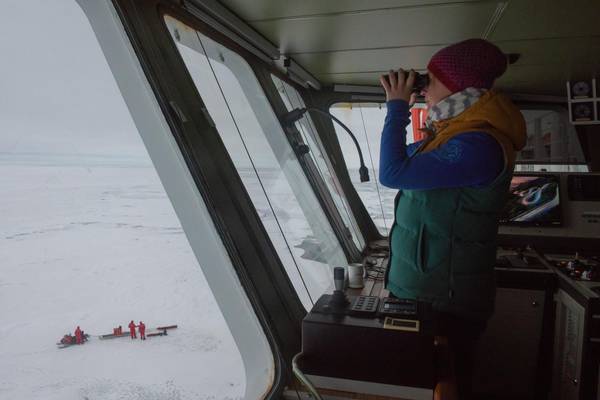Biggest North Pole mission back from 'dying Arctic'
It gathered vital information on effects of global warming
12 October, 11:56The German Alfred Wegener Institute's Polarstern ship returned to the port of Bremerhaven after 389 days spent drifting through the Arctic trapped in ice, allowing scientists to gather vital information on the effects of global warming in the region. "I have waited for this moment for so long that my heart is palpitating. The ship is now back," said institute director Antje Boetius from on board another ship accompanying the research vessel back to port. Ahead of their return, mission leader Markus Rex told AFP that the team of several hundred scientists from 20 countries have seen for themselves the dramatic effects of global warming on ice in the region considered "the epicentre of climate change. "We witnessed how the Arctic ocean is dying," Rex said. "We saw this process right outside our windows, or when we walked on the brittle ice." Underlining how much of the sea ice has melted away, Rex said the mission was able to sail through large patches of open water, "sometimes stretching as far as the horizon". "At the North Pole itself, we found badly eroded, melted, thin and brittle ice." - 'Ice-free Arctic' - If the warming trend in the North Pole continues, then in a few decades we will have "an ice-free Arctic in the summer", Rex said. The researchers' observations have been backed up by US satellite images showing that in 2020, sea ice in the Arctic reached its second-lowest summer minimum on record, after 2012. The Polarstern mission, dubbed MOSAIC, spent over a year collecting data on the atmosphere, ocean, sea ice and ecosystems to help assess the impact of climate change on the region and the world. To carry out the research, four observational sites were set up on the sea ice in a radius of up to 40 kilometres around the ship. The researchers collected water samples from beneath the ice during the polar night to study plant plankton and bacteria and better understand how the marine ecosystem functions under extreme conditions. The 140-million-euro ($165 million) expedition is also bringing back 150 terabytes of data and more than 1,000 ice samples. "The expedition will, of course, produce results on many different levels," Rex said. The team measured more than 100 parameters almost continuously throughout the year and are hoping the information will provide a "breakthrough in understanding the Arctic and climate system", he said. Thomas Krumpen, sea ice physicist said: "For us the second phase is starting -- the analysis of data. A lot of data has returned with the ship and we will likely be busy with it over the next ten years." The aim is to develop models to help predict what heatwaves, heavy rains or storms could look like in 20, 50 or 100 years' time. (ANSA-AFP).














